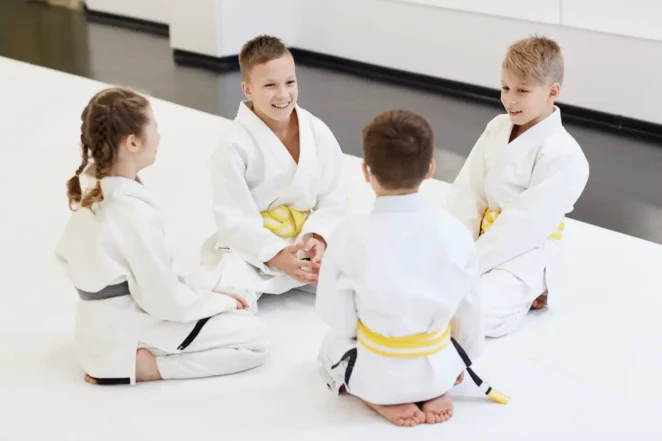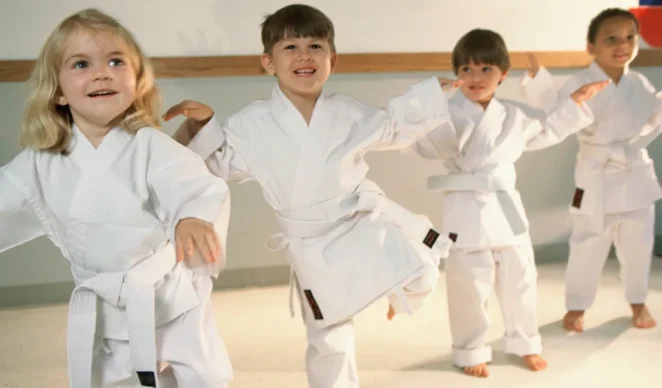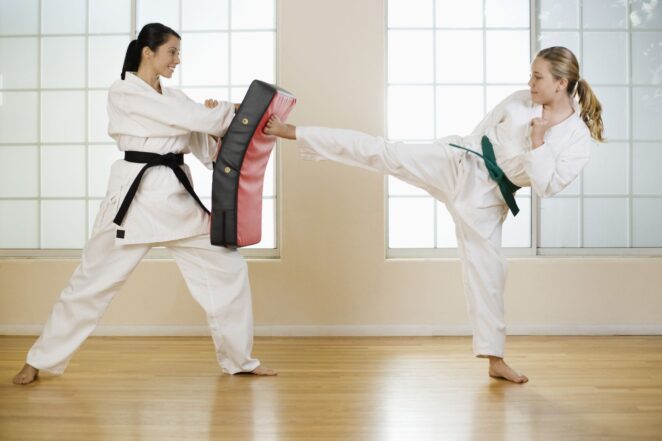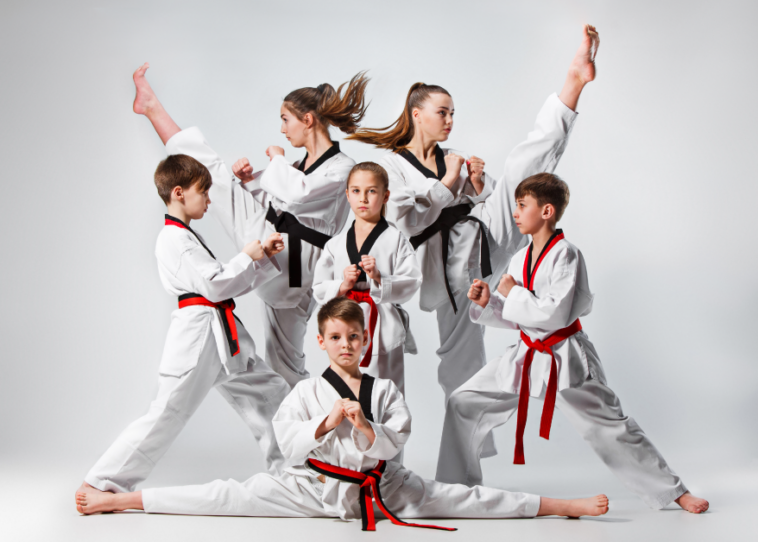Martial arts have become increasingly popular among children in recent years. Parents are realizing the numerous benefits that martial arts can offer their children, such as improved physical fitness, self-confidence, discipline, and focus. With so many different types of martial arts to choose from, it can be challenging to decide which one is best suited for your child. In this blog post, we’ll explore why karate may be the best choice for your child.
Different Types of Martial Arts
There are many different types of martial arts, each with its unique style and techniques. Some of the most popular martial arts include:
- Taekwondo: A Korean martial art that focuses on kicks, punches, and blocks. Taekwondo emphasizes speed, agility, and flexibility.
- Judo: A Japanese martial art that focuses on throws, pins, and joint locks. Judo teaches students how to use their opponent’s strength against them.
- Brazilian Jiu-Jitsu: A martial art that emphasizes ground fighting and grappling. Brazilian Jiu-Jitsu teaches students how to defend themselves and gain control over their opponent on the ground.
- Kung Fu: A Chinese martial art that focuses on strikes, kicks, and acrobatic movements. Kung Fu emphasizes balance, agility, and coordination.
- Karate: A Japanese martial art that focuses on strikes, kicks, and blocks. Karate emphasizes power, speed, and accuracy.
Karate vs Other Martial Arts: Key Differences

While each martial art has its unique advantages, Karate For Kids stands out in several ways. One of the most significant differences between this and other martial arts is the emphasis on striking techniques. Students learn how to deliver powerful punches and kicks that can quickly incapacitate an opponent.
Karate also places a strong emphasis on discipline and focus. Students are taught to respect their instructors, fellow students, and themselves. It teaches students how to set goals and work hard to achieve them.
Benefits for Children
Karate offers numerous benefits for children. Here are some of the most significant:
Physical Fitness and Health Benefits
Karate is an excellent way for children to stay active and healthy. Classes involve warm-up exercises, stretching, and a variety of drills that improve strength, endurance, and flexibility. Regular practice can help children maintain a healthy weight, improve cardiovascular health, and reduce the risk of chronic diseases.
Mental and Emotional Benefits
Karate is not just about physical fitness; it also offers significant mental and emotional benefits for children. It teaches children how to stay focused and disciplined, which can help them in all areas of their lives. Children who practice karate learn how to set goals, work hard, and persevere even when things get tough.
This martial art also helps children develop self-confidence and self-esteem. As children progress through the ranks and earn new belts, they gain a sense of accomplishment and pride. It teaches children that with hard work and dedication, they can achieve anything they set their minds to.
Self-Defense Skills

One of the most significant benefits of karate is that it teaches children how to defend themselves. Students learn a variety of striking, kicking, and blocking techniques that can be used to protect themselves in dangerous situations. Children who practice karate develop the confidence and skills they need to stay safe in a variety of situations.
Respect for Others and Oneself
Karate places a strong emphasis on respect for others and oneself. Students are taught to show respect to their instructors, fellow students, and opponents. They are also taught to respect themselves and their bodies by maintaining proper hygiene and taking care of themselves physically and emotionally.
The Importance of Choosing the Right Martial Art for Your Child
Choosing the right martial art for your child is essential. It’s essential to consider your child’s interests, personality, and goals when selecting a martial art. Karate may be the best choice for your child if they enjoy striking techniques, want to learn self-defense skills, and value discipline and focus.
It’s also important to consider the instructor and the dojo when selecting a martial art. Look for an instructor who is experienced, knowledgeable, and passionate about teaching martial arts to children, and consider exploring the exceptional BJJ classes offered by UMF. Choose a dojo that is clean, safe, and welcoming to all students.
Belt System in Karate: How It Works and What Each Belt Represents
The belt system in karate is based on a series of colored belts. Students begin their training as white belts and progress through a series of belts of increasing colors, culminating in the black belt. The number of belts and colors can vary between different styles of karate, but the basic structure is generally the same.
The process of earning each belt is not automatic; it requires hard work, dedication, and a demonstration of mastery of the techniques and skills required for each level. Students must pass an examination to earn each belt, which is typically conducted by a qualified instructor.
What Each Belt Represents in Karate

White: The white belt represents a student’s beginner status. It symbolizes the start of their journey and their willingness to learn and develop their skills.
Yellow: The yellow belt is the first level of progress. At this stage, students have gained a basic understanding of karate and are starting to learn more advanced techniques.
Orange: The orange belt represents the second level of progress. Students have built a solid foundation in the basics and are beginning to develop their unique style.
Green: The green belt is the third level of progress. At this point, students have a good grasp of the basic techniques and are starting to refine their style and techniques.
Blue: The blue belt represents the fourth level of progress. Students at this level have a high level of proficiency in basic techniques and are starting to master more complex techniques.
Purple: The purple belt is the fifth level of progress. Students at this stage have a high level of proficiency in both basic and advanced techniques and are starting to develop their unique style and approach to karate.
Brown: The brown belt represents the sixth level of progress. At this stage, students are highly skilled in all aspects of karate and are starting to prepare for the ultimate goal of earning a black belt.
Black: The black belt represents the pinnacle of achievement in karate. It is a symbol of the student’s mastery of the art and their dedication to their training. Black belt students are considered experts in their art, but their training continues as they seek to improve their skills and share their knowledge with others.
Conclusion
Karate is an excellent martial art choice for children, as it provides a safe and fun way to learn self-defense. It also teaches important life skills such as respect, discipline, focus, and determination. With these lessons in mind, karate can be incredibly beneficial for your child’s physical and mental development. So if you are looking for a martial art that will help your child grow both physically and mentally, then karate may be the best choice for them!




